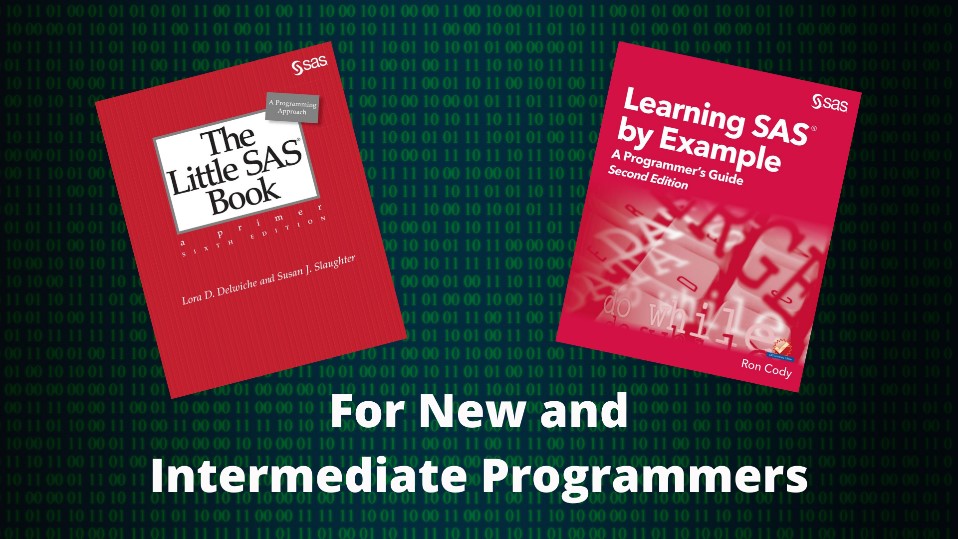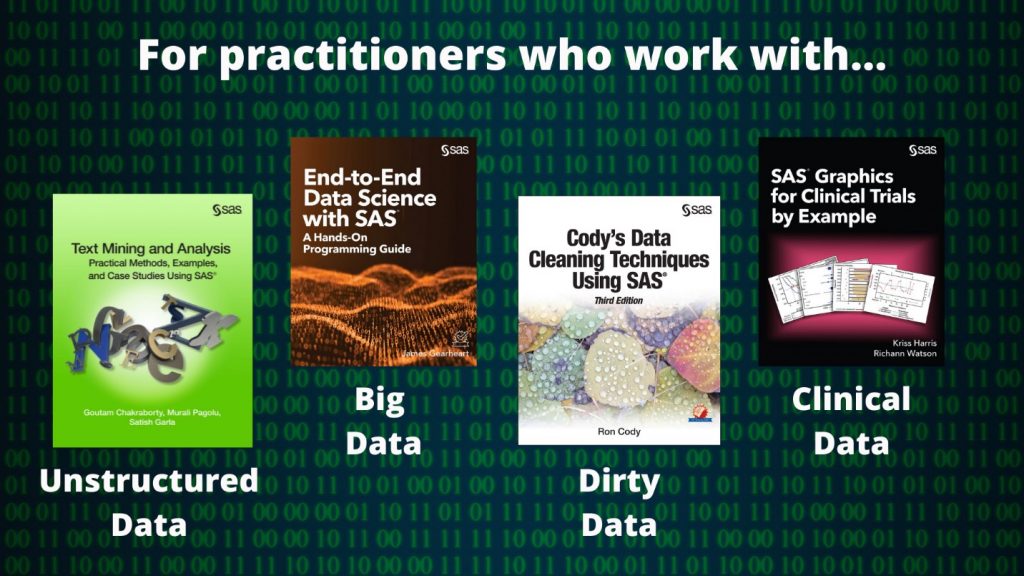The Day of the Programmer is not enough time to celebrate our favorite code-creators. That’s why at SAS, we celebrate an entire week with SAS Programmer Week! If you want to extend the fun and learning of SAS Programmer Week year-round, SAS Press is here to support you with books for programmers at every level.
2021 has been a big year for learning, so we wanted to share the six most popular books for programmers this year. There are some old favorites on this list as well as some brand-new books on a variety of topics. Check out the list below, and see what your fellow programmers are reading this year!
This book is at the top of almost every list of recommended books for anyone who wants to learn SAS. And for good reason! It breaks down the basics of SAS into easy-to-understand chunks. There are also tons of practice questions included in its companion book, Exercises and Projects for The Little SAS Book. If you are new to SAS or are interested in getting your basic certification, this is the book for you.
Whether you are learning SAS for the first time or just need a quick refresher on a single topic, this book is well-organized so that you can read start to finish or skip to your topic of interest. Filled with real-world examples, this is a book that should be on every SAS programmer’s bookshelf!
If you work with big data, then you probably work with a lot of text. The third book on our list is for anyone who handles unstructured data. This book focuses on practical solutions to real-life problems. You’ll learn how to collect, cleanse, organize, categorize, explore, analyze, and interpret your data.
This book offers a step-by-step explanation of how to create machine learning models for any industry. If you want to learn how to think like a data scientist, wrangle messy code, choose a model, and evaluate models in SAS, then this book has the information that you need to be a successful data scientist.
Every programmer knows that garbage in = garbage out. Take out the trash with this indispensable guide to cleaning your data. You’ll learn how to find and correct errors and develop techniques for correcting data errors.
If you are a programmer who works in the health care and life sciences industry and want to create visually appealing graphs using SAS, then this book is designed specifically for you. You’ll learn how to create a wide range of graphs using Graph Template Language (GTL) and statistical graphics procedures to solve even the most challenging clinical graph problems.
An honorable mention also goes to the SAS Certification Guides. They are a great way to study for the certification exams for the SAS Certified Specialist: Base Programming and SAS Certified Professional: Advanced Programming credentials.
We have many books available to support you as you develop your programming skills – and some of them are free! Browse all our available titles today.



7 Comments
Thanks for this article.
http://www.eduanalytix.com
Don't forget about the "Hash Book" by Don Henderson and Paul Dorfman.
Best
Bart
Congratulations SAS Authors!
Hi Suzanne,
Thanks for sharing our book "SAS Graphics for Clinical Trials by Example".
Suzanne,
Thanks for including "The Little SAS Book, Sixth Edition" in this post! It's always great to see our book mentioned. I should make one clarification. "The Little SAS Book" does not contain practice questions. Practice questions are in the companion book "Exercises and Projects for The Little SAS Book" which can be used with or without "The Little SAS Book."
Susan Slaughter
Thanks for that clarification, Susan! I'm going to edit the post so that's more clear. The practice questions in Exercises and Projects are definitely one of the most popular things that readers mention about the book.
Thanks, Suzanne! Your clarification looks great.